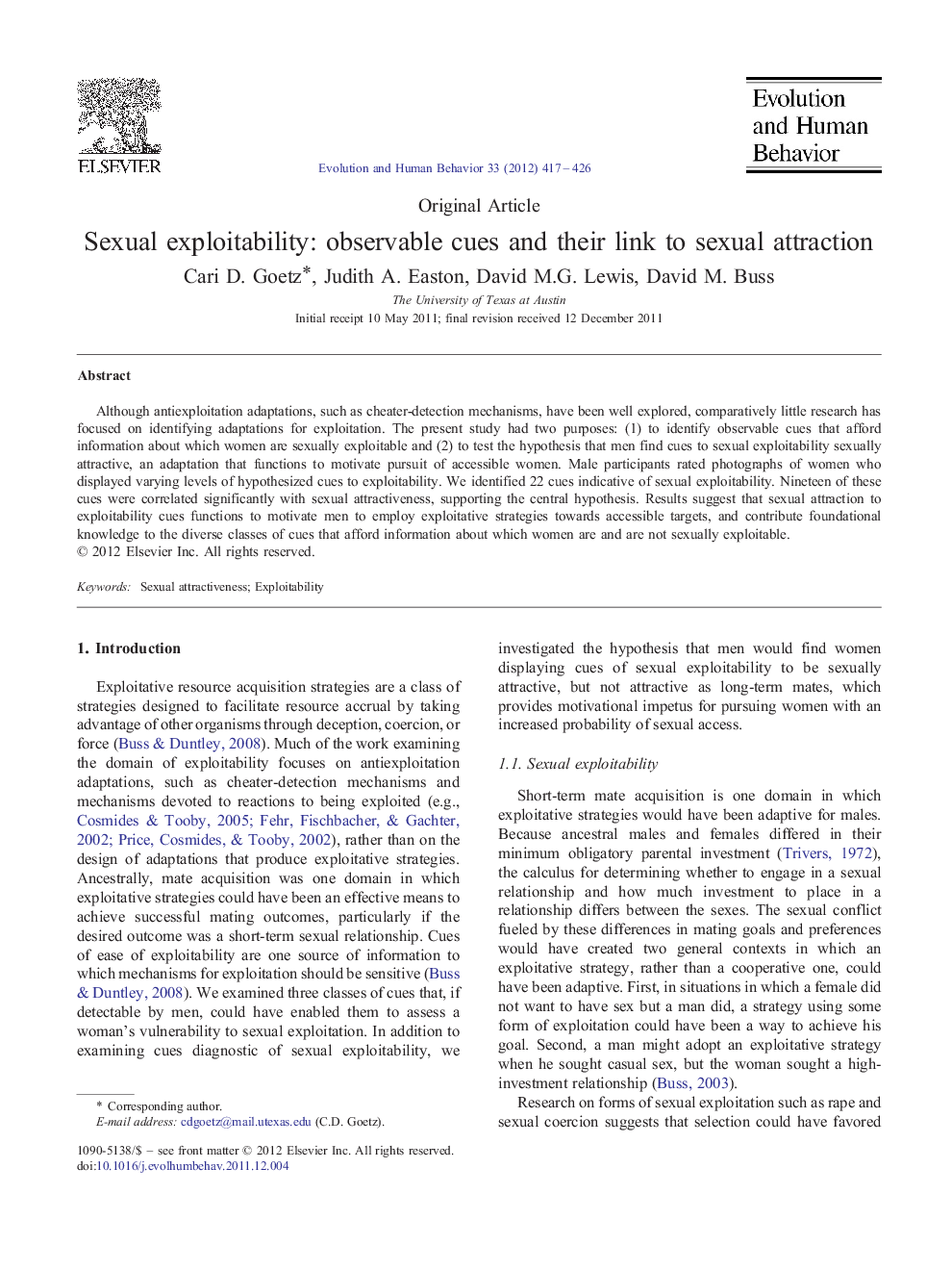| Article ID | Journal | Published Year | Pages | File Type |
|---|---|---|---|---|
| 943386 | Evolution and Human Behavior | 2012 | 10 Pages |
Although antiexploitation adaptations, such as cheater-detection mechanisms, have been well explored, comparatively little research has focused on identifying adaptations for exploitation. The present study had two purposes: (1) to identify observable cues that afford information about which women are sexually exploitable and (2) to test the hypothesis that men find cues to sexual exploitability sexually attractive, an adaptation that functions to motivate pursuit of accessible women. Male participants rated photographs of women who displayed varying levels of hypothesized cues to exploitability. We identified 22 cues indicative of sexual exploitability. Nineteen of these cues were correlated significantly with sexual attractiveness, supporting the central hypothesis. Results suggest that sexual attraction to exploitability cues functions to motivate men to employ exploitative strategies towards accessible targets, and contribute foundational knowledge to the diverse classes of cues that afford information about which women are and are not sexually exploitable.
